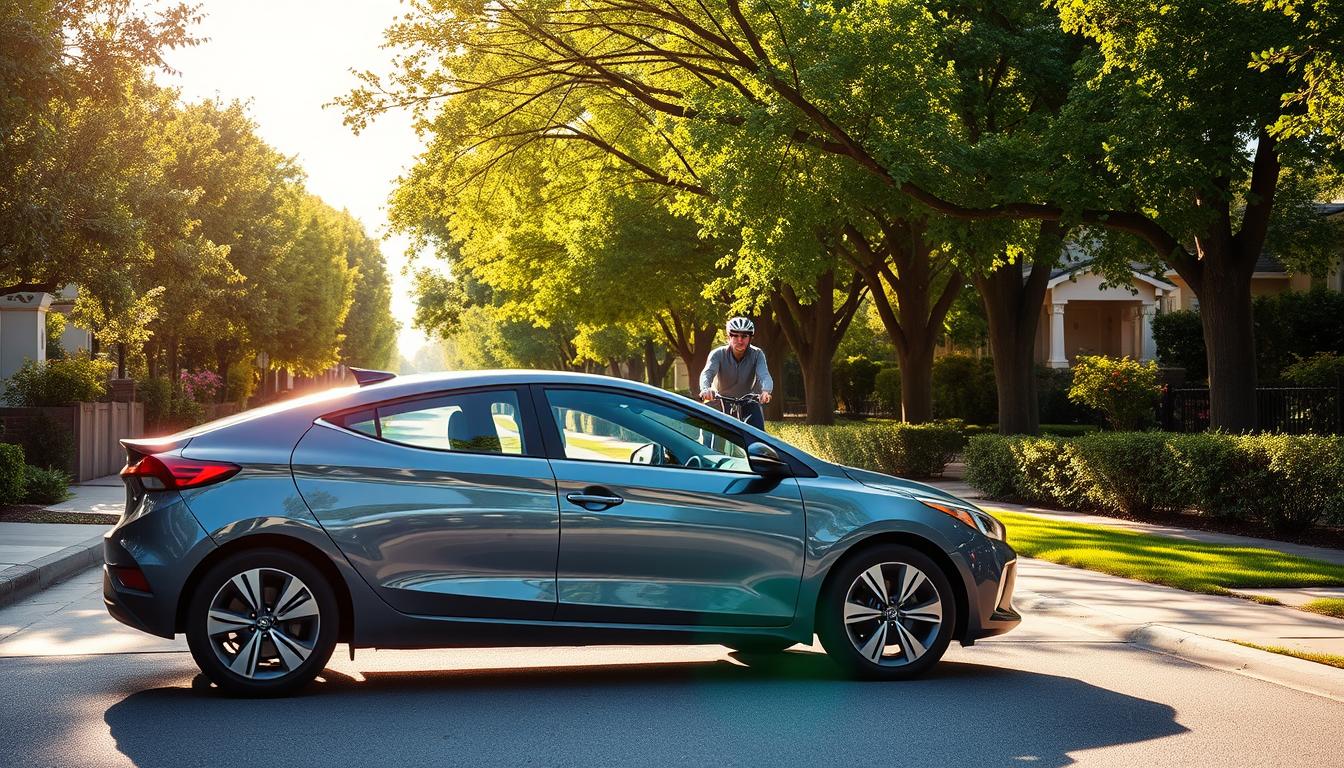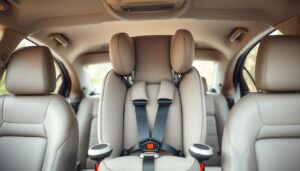How to Drive Eco-Friendly on a Budget
Did you know that transportation is now the largest source of planet-warming pollution in the United States? This fact highlights the significant impact our daily commutes have.
Many people believe that helping the environment requires spending a lot of money. They think it means buying a new electric car or making expensive upgrades. This guide shatters that myth.
You can make a real difference for the planet through smarter driving habits. Better yet, these tips actually put cash back in your pocket. It’s a win-win situation for your wallet and the world.
We will explore simple, effective ways to reduce your carbon footprint. This includes everything from how you maintain your car to the choices you make behind the wheel. These strategies are accessible to everyone, regardless of your budget.
This approach proves that financial savings and environmental responsibility go hand-in-hand. Get ready to learn how small changes can lead to big results.
Key Takeaways
- Eco-conscious driving habits can lead to immediate savings on fuel and maintenance costs.
- You do not need to purchase a new vehicle to start reducing your environmental impact today.
- Simple adjustments to your daily routine behind the wheel make a significant difference.
- Proper vehicle maintenance is a cornerstone of both eco-friendly and budget-conscious driving.
- This guide provides a practical roadmap for combining financial savings with environmental care.
Understanding Eco-Friendly Driving and Budgeting in the U.S.
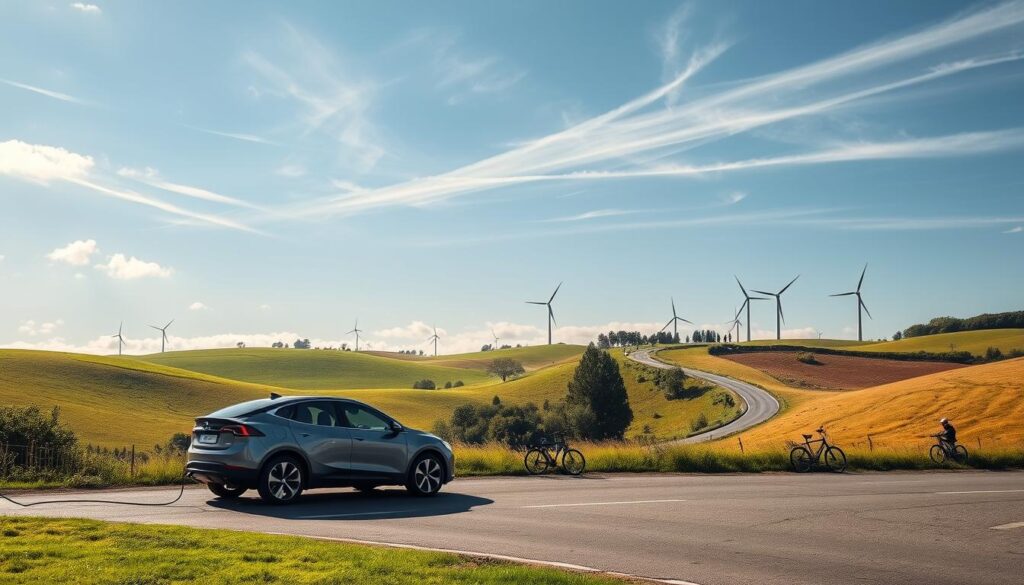
The connection between daily commuting and ecological impact is more significant than many realize. Road transport accounts for approximately 20% of all emissions in the United States.
Defining Eco-Friendly Driving
Eco-friendly driving means operating your vehicle to minimize harmful emissions and conserve fuel. This approach directly reduces your carbon footprint while meeting transportation needs effectively.
Vehicle exhaust doesn’t just affect our air quality. It depletes natural resources and disrupts ecosystems. These emissions can even contribute to health issues like heart disease.
Balancing Environmental Impact with Cost-Saving Measures
The best way to reduce carbon footprint involves strategies that also save money. Improving your car’s fuel economy through better driving habits offers dual benefits.
Focus on practices that boost efficiency without expensive upgrades. Simple behavioral changes can significantly cut fuel costs while helping the environment. This balanced approach makes sustainability accessible to everyone.
How to Drive Eco-Friendly on a Budget: Key Strategies

Achieving better fuel economy doesn’t require expensive technology upgrades—just smarter habits behind the wheel. These approaches deliver immediate results for your wallet and the environment.
Improving Fuel Economy and Reducing Emissions
Proper tire maintenance offers one of the easiest wins. Keeping tires correctly inflated can boost your fuel efficiency by up to 3%. This simple check takes minutes but pays dividends for months.
Your driving technique dramatically affects gas mileage. Smooth acceleration and gentle braking can improve MPG by up to 40% in city traffic. This approach also reduces wear on your vehicle’s components.
Don’t overlook basic maintenance. A clean air filter can improve fuel economy by as much as 10%. These small investments prevent larger problems down the road.
Practical Benefits for Your Wallet and the Planet
These strategies work together to create significant savings. You’ll spend less on fuel while reducing your environmental impact. The cumulative effect makes a real difference.
Every gallon saved means less money spent and fewer emissions released. This helps reduce carbon pollution that affects our planet. Many helpful articles detail these connections.
| Strategy | Fuel Savings | Emission Reduction | Annual Savings |
|---|---|---|---|
| Proper Tire Inflation | Up to 3% | 3% less CO2 | $40-$60 |
| Smooth Driving | Up to 40% city | 40% less pollutants | $300-$500 |
| Clean Air Filter | Up to 10% | 10% less emissions | $100-$150 |
Combining these approaches maximizes your results. You create a sustainable driving economy that benefits everyone. The table above shows how these small changes add up significantly over time.
Choosing and Maintaining the Right Vehicle
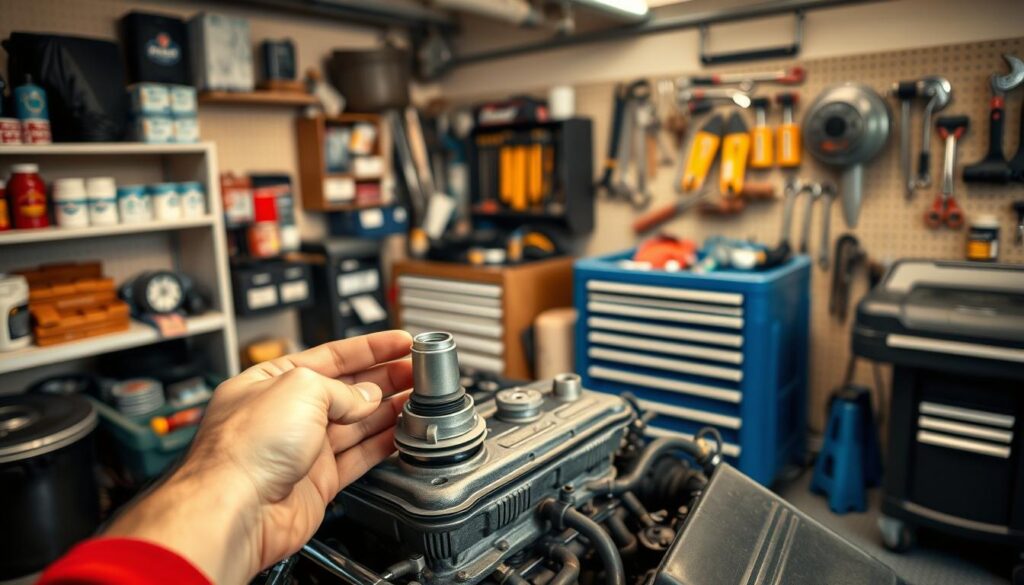
The foundation for cost-effective, earth-friendly driving begins with choosing the right car and keeping it in top condition. Smart decisions here pay dividends for years.
Selecting Fuel-Efficient, Low-Emission Cars
Start your search with the EPA’s Green Vehicle Guide. This free resource helps identify models with strong fuel economy ratings.
Prioritize vehicles that minimize greenhouse gas emissions. These choices save money year after year while protecting our environment.
Regular Maintenance, Tire Checks, and Oil Tips
Proper maintenance keeps your vehicle running efficiently. A well-cared-for car uses less fuel and produces fewer emissions.
Check your tire pressure monthly, especially during seasonal changes. Under-inflated tires create rolling resistance that wastes gas.
Find the ideal pressure listed on your driver’s side door jamb. This simple practice can boost fuel efficiency by up to 3%.
Use your auto manual to select the right oil grade. Synthetic, environmentally-friendly motor oil helps your engine perform better.
Consistent care prevents expensive problems while maximizing your vehicle’s economy. It’s a smart investment for your wallet and the planet.
Eco Driving Techniques on the Road
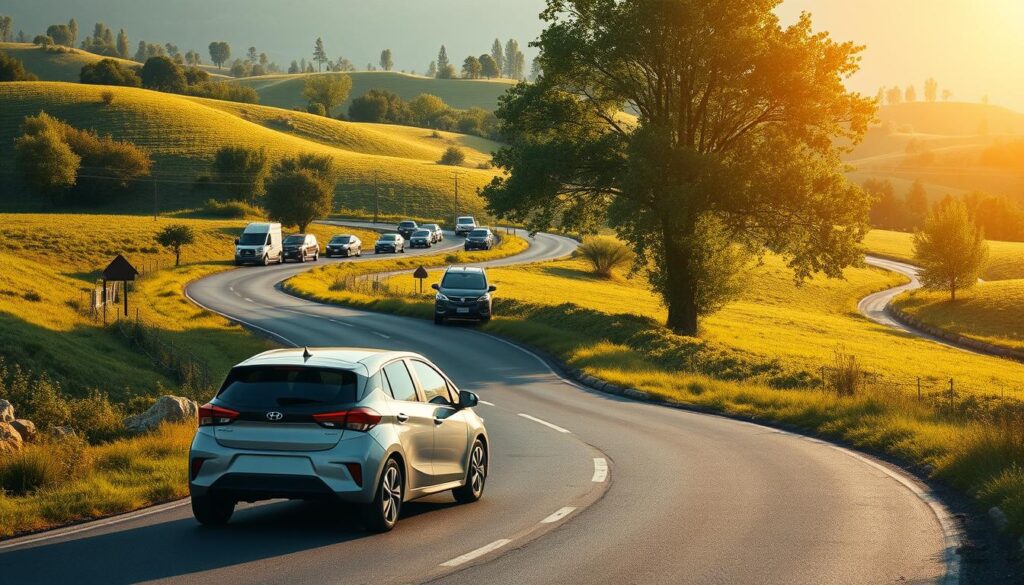
The most significant changes to your fuel consumption happen not with your car, but with your right foot. Mastering a smooth, anticipatory driving style is the ultimate budget-friendly upgrade.
Smooth Acceleration and Smart Gear Shifting
Gentle acceleration is key. Imagine an egg under your pedal. Jackrabbit starts waste a surprising amount of gas.
For manual transmissions, shift gears smoothly and at the right RPM. This keeps the engine in its most efficient range. It’s a simple skill with a big payoff.
This approach to acceleration reduces strain on your engine and transmission. It’s a win for your wallet and your vehicle’s longevity.
Strategies to Avoid Excessive Braking and Idling
Anticipate traffic flow to minimize braking. Coast to decelerate whenever possible instead of stomping on the brake pedal. This saves gas and reduces wear.
Avoid idling for more than 30 seconds. Modern engines are more efficient restarting than idling. This is a crucial tip for city driving.
Forget long warm-ups. Gently driving for the first few minutes is best. If you’re stopped for more than a minute or two, turn off the engine.
These techniques require no money, just mindfulness. Over time, the savings add up. Many helpful articles detail these simple habits for better efficiency on the road.
Utilizing Renewable Fuels and Vehicle Upgrades
Beyond just changing your driving habits, the fuel you choose and the type of vehicle you drive play a huge role in your environmental impact. These upgrades represent a powerful next step for committed drivers.
Exploring Alternative Fuels like E85 and Biodiesel
Renewable fuel options like E85 and biodiesel offer a cleaner-burning alternative. E85 is a blend of 85% ethanol, often made from corn, and 15% gasoline.
It’s designed for flex-fuel vehicles. Similarly, biodiesel blends like B5 can be used in many diesel cars. Both help reduce our reliance on fossil fuels.
Always check your owner’s manual first. Using an incompatible fuel can cause engine damage over time.
The Role of Hybrids and Electric Vehicles in Eco Driving
For a more significant reduction in emissions, consider a hybrid or electric vehicle (EV). These technologies are more accessible than ever.
Hybrid cars combine a gasoline engine with an electric motor. This setup provides excellent fuel savings. It’s a great middle-ground option.
Fully electric cars, or EVs, produce zero tailpipe pollution. The good news is that the used market for EVs is growing each year, making them budget-friendly.
- Long-term savings: Lower fuel or electricity costs and reduced maintenance (no oil changes for EVs).
- Practicality: Charging infrastructure is improving, making EVs perfect for everyday use.
This makes them a smart investment for your wallet and the planet.
Budget-Friendly Lifestyle and Driving Habits

Small adjustments to your routine can transform your environmental impact without changing your vehicle. These simple lifestyle habits work alongside smart driving techniques to maximize your savings.
Reducing Weight and Minimizing Road Load
Your car works harder when it carries extra weight. Remove heavy items from your trunk when they’re not needed. Just 100 pounds of unnecessary things can reduce fuel efficiency by 1-2%.
Take a few minutes to clean out your vehicle regularly. Sports equipment, tools, and other heavy items add up quickly. A lighter load means better performance and lower fuel consumption.
Roof racks create significant air resistance even when empty. Remove these accessories when you’re not actively using them. This simple step improves your car‘s aerodynamics on the road.
Incorporating Walking, Biking, and Public Transport
Consider alternative transportation for short trips. Walking or biking just once or twice weekly makes a real difference. These options produce zero emissions and improve your health.
Public transportation offers another smart choice. It reduces your personal carbon footprint while saving money on fuel and parking. You gain extra time to read or relax during your commute.
These lifestyle changes complement your eco-conscious driving habits. Together, they create substantial savings for your wallet and the planet. Many helpful articles explore these budget-friendly strategies.
Conclusion
Practical solutions exist that allow you to reduce your environmental impact while keeping more cash in your wallet. These tips prove that protecting our planet doesn’t require expensive changes to your lifestyle or vehicle.
The ways we’ve explored work together to boost your car‘s fuel efficiency and cut emissions. Simple maintenance and smarter driving habits create real savings on gas and maintenance costs.
Every small step you take helps shrink your carbon footprint. These improvements add up to meaningful benefits for both your budget and the environment.
Stay tuned for the latest news about automotive efficiency and the evolving green economy. Your commitment to sustainable practices makes a genuine difference for our shared world.
FAQ
What is the single most effective way to improve my car’s fuel efficiency?
Can aggressive driving really impact my fuel economy that much?
Is it worth considering a hybrid or electric vehicle on a budget?
How does regular engine maintenance help the environment?
What are some quick, no-cost habits I can adopt for eco-friendly driving?

Eduard Kingly is a travel and lifestyle content creator with a focus on personal development and education. He combines firsthand travel experiences with research-driven insights to guide readers in discovering new places, building better habits, and pursuing meaningful learning.

